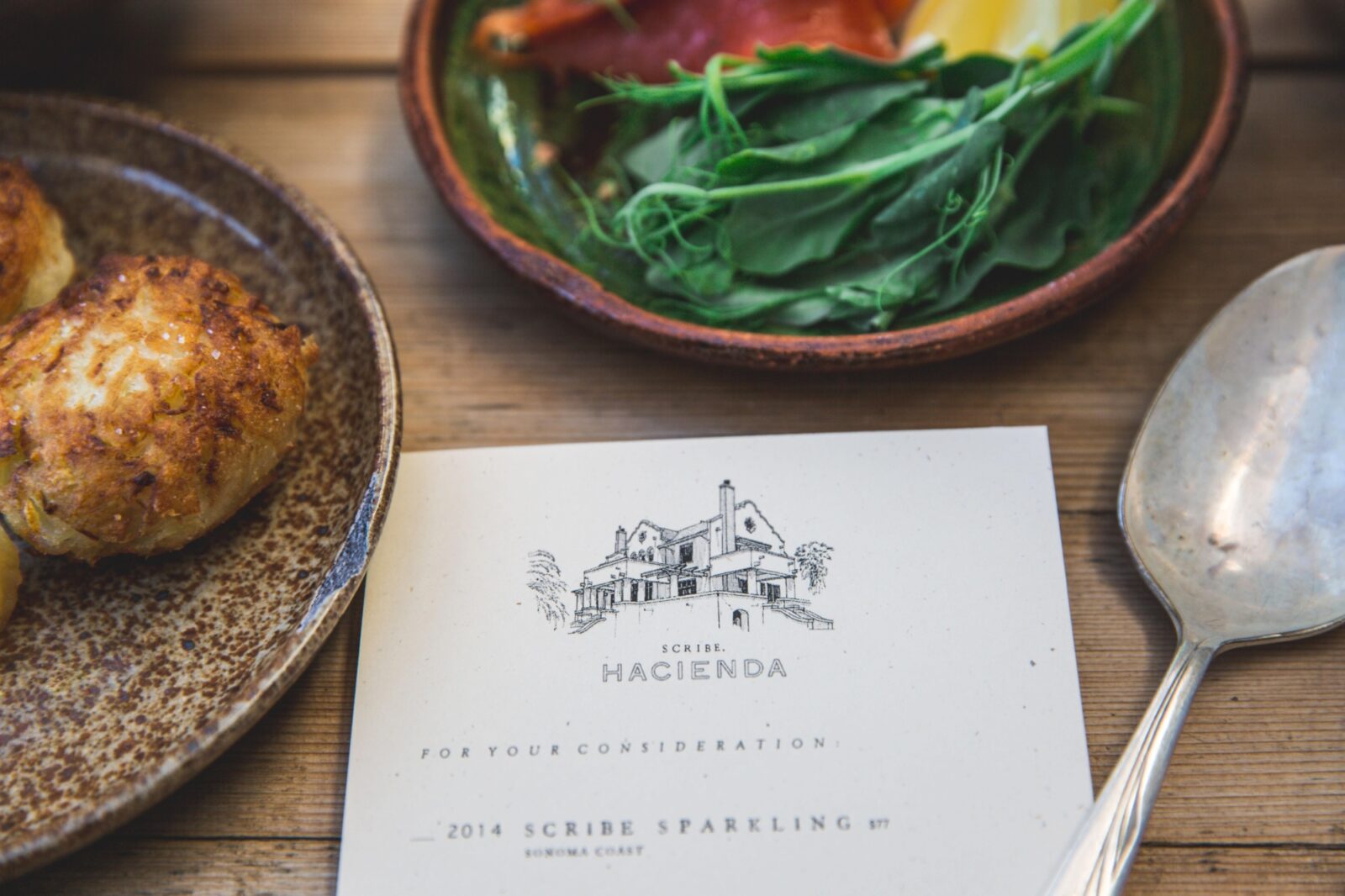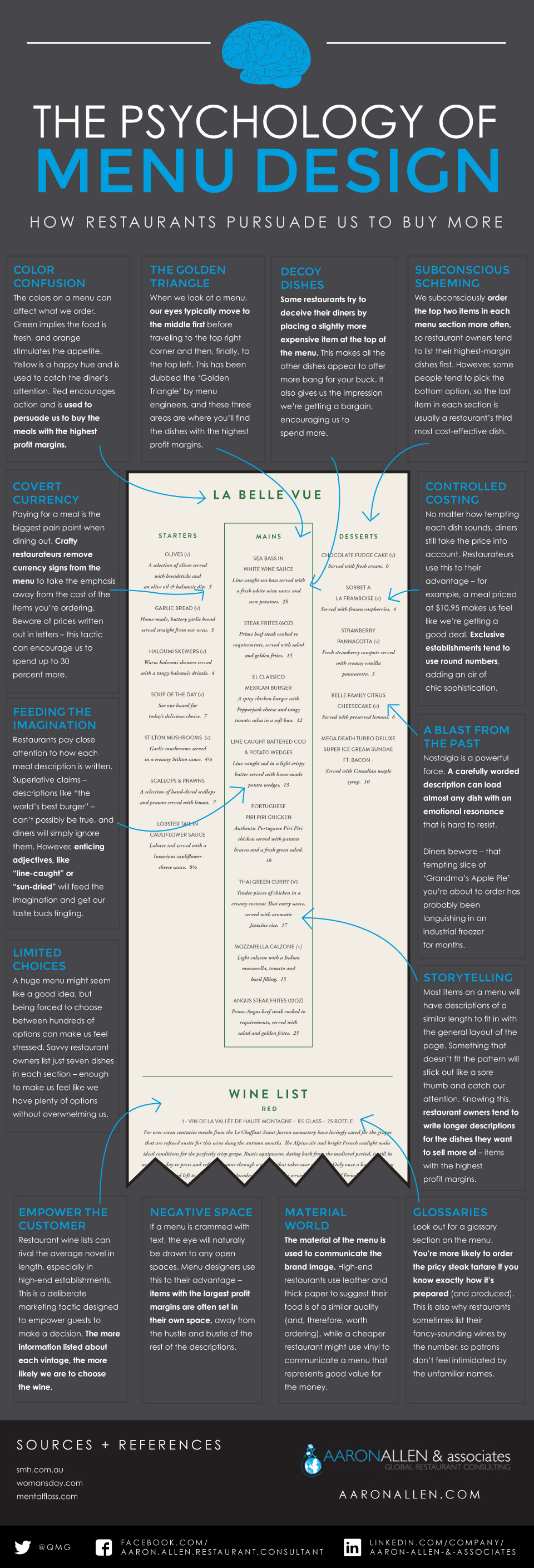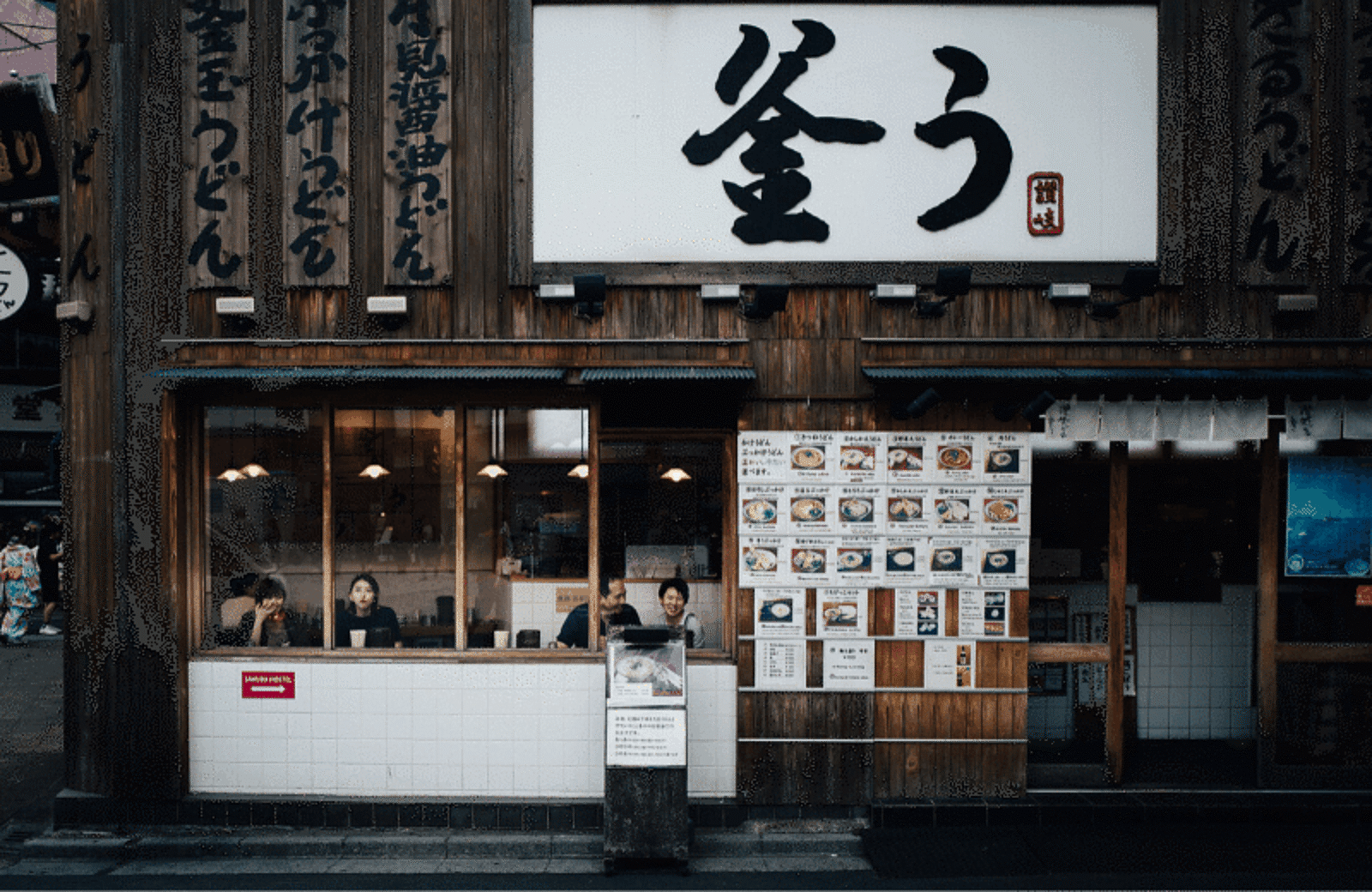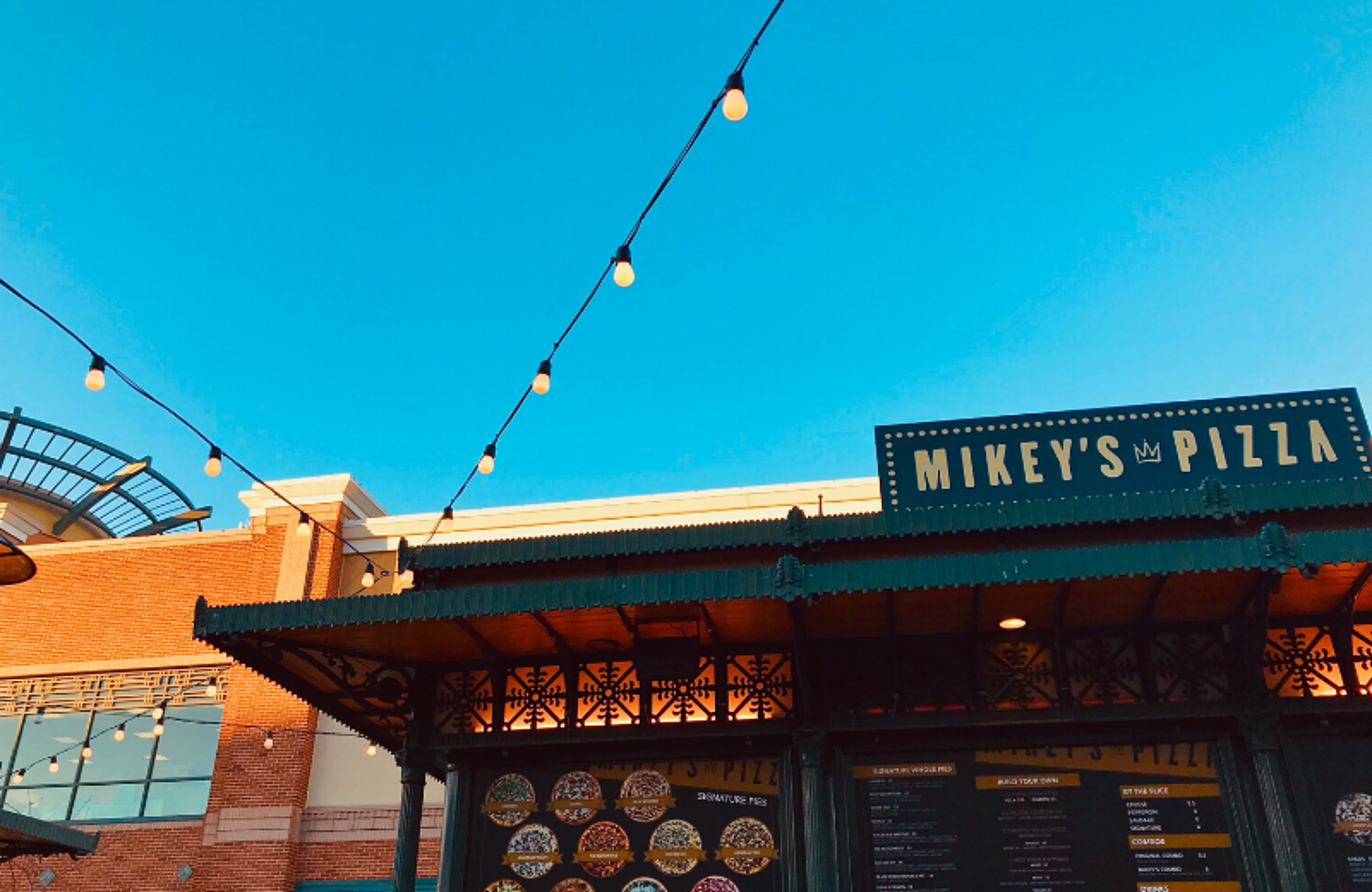
The Psychology of Restaurant Menu Design [Infographic]
With menu engineering becoming more prevalent for today's restaurateurs, check out the psychology trends behind restaurant menu design.

Allie Van DuyneAuthor
With restaurateurs more and more cognizant of the correlation between their menu prices and their inventory costs, restaurant menu design has become crucial to increasing popularity of some dishes and decreasing popularity of others.
Restaurant owners may do this by calculating their workhorses, puzzles, and stars with menu engineering or simply standardizing a new menu every season, but it's important to know exactly how expert menu engineers are redesigning their menu, and why these changes work with guests.
The team at Aaron Allen & Associates recently published an infographic about these restaurant menu design techniques that prove the menu is more than a piece of paper. Your use of pictures, currency signs, and enticing adjectives really do make a difference to your sales. Try some of these tips, and watch your item sales soar in your product mix report.
Menu Engineering Course
Take this course to make the most of your menu. Learn about menu psychology and design, managing your menu online, and adapting your menu to increase sales.


How Restaurants Persuade Us to Buy More
Color Confusion
The colors on a menu can affect what we order. Green implies the food is fresh, and orange stimulates the appetite. Yellow is a happy hue and is used to catch the diner's attention. Red encourages action and is used to persuade us to buy the meals with the highest profit margins.
The Golden Triangle
When we look at a menu, our eyes typically move to the middle first before traveling to the top right corner and then, finally, to the top left. This has been dubbed the "Golden Triangle" by menu engineers, and these three areas are where you'll find the dishes with the highest profit margin.
Decoy Dishes
Some restaurants try to deceive their diners by placing a slightly more expensive item at the top of the menu. This makes all the other dishes appear to offer more bang for your buck. It also gives us the impression we're getting a bargain, encouraging us to spend more.
Subconscious Scheming
We subconsciously order the top two items in each menu section more often, so restaurant owners tend to list their highest-margin dishes first. However, some people tend to pick the bottom option, so the last item in each section is usually a restuarant's third most cost-effective dish.
Covert Currency
paying for a meal is the biggest pain point when dining out. Crafty restaurateurs remove the currency signs from the menu to take the emphasis away from the cost of the items you're ordering. Beware of prices written out in letters - this tactic can encourage us to spend up to 30% more.
Controlled Costing
No matter how tempting each dish sounds, diners still take the price into account. Restaurateurs use this to their advantage - for example, a meal priced at $10.95 makes us feel like we're getting a good deal. Exclusive establishments tend to use round numbers, adding an air of chic sophistication.
Feeding the Imagination
Restaurants pay close attention to how each meal description is written. Superlative claims - descriptions like "the world's best burger" - can't possibly be true, and diners will simply ignore them. However, enticing adjectives, like "line-caught" or "sun-dried" will feed the imagination and get our taste buds tingling.
A Blast from the Past
Nostalgia is a powerful force. A carefully worded description can load almost any dish with an emotional resonance that's hard to resist. Diners beware - that tempting slice of "Grandma's Apple Pie" you're about to order has probably been languishing in an industrial freezer for months.
Limited Choices
A huge menu might seem like a good idea, but being forced to choose between hundreds of options can make us feel stressed. Savvy restaurant owners list just seven dishes in each section - enough to make us feel like we have plenty of options without overwhelming us.
Storytelling
Most items on a menu will have descriptions of a similar length to fit in with the general layout of the page. Something that doesn't fit the pattern will stick out like a sore thumb and catch our attention. Knowing this, restaurant owners tend to write longer descriptions for the dishes they want to sell more of - items with the highest profit margins.
Empower the Customer
Restaurant wine lists can rival the average novel in length, especially in high-end establishments. This is a deliberate marketing tactic designed to empower guests to make a decision. The more information listed about each vintage, the more likely we are to choose the wine.
Negative Space
If a menu is crammed with text, the eye will naturally be drawn to any open spaces. Menu designers use this to their advantage - items with the largest profit margins are often set in their own space, away from the hustle and bustle of the rest of the descriptions.
Material World
The material of the menu is used to communicate the brand image. High-end restaurants use leather and thick paper to suggest their food is of a similar quality (and, therefore, worth ordering), while a cheaper restaurant might use vinyl to communicate a menu that represents good value for the money.
Glossaries
Look out for a glossary section on the menu. You're more likely to order the pricey steak tartare if you know exactly how it's prepared (and produced). This is also why restaurants sometimes list their fancy-sounding wines by the number, so patrons don't feel intimidated by the unfamiliar names.
Related Menu Ideas
Restaurant Menu Templates
Use these menu templates as a starting point for your menu design or to give your menus a refresh.

Is this article helpful?
DISCLAIMER: This information is provided for general informational purposes only, and publication does not constitute an endorsement. Toast does not warrant the accuracy or completeness of any information, text, graphics, links, or other items contained within this content. Toast does not guarantee you will achieve any specific results if you follow any advice herein. It may be advisable for you to consult with a professional such as a lawyer, accountant, or business advisor for advice specific to your situation.
Read More
Subscribe to On the Line
Sign up to get industry intel, advice, tools, and honest takes from real people tackling their restaurants’ greatest challenges.


